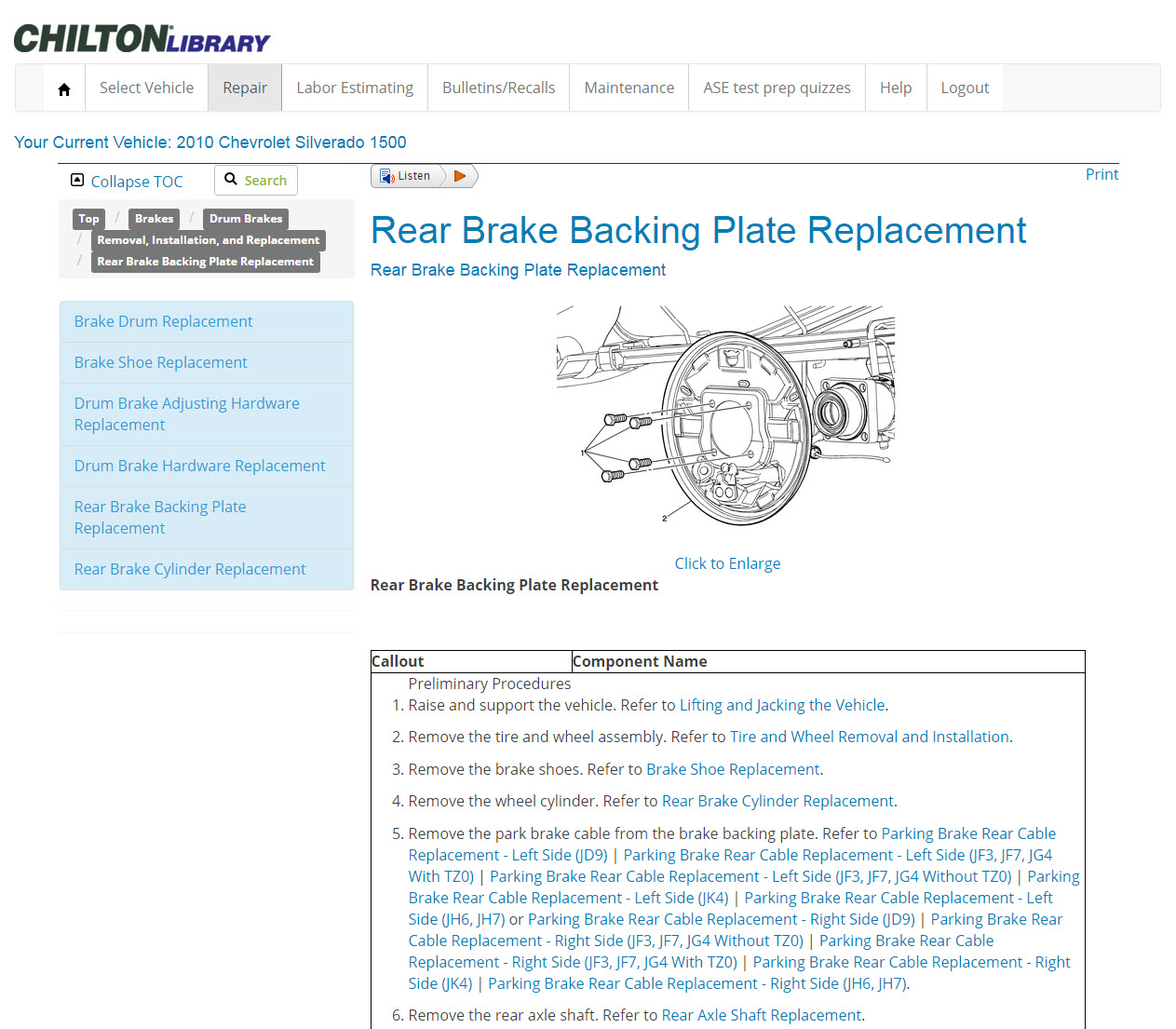Posted on April 18, 2016
By Mary Kelly
One of my favorite databases to play with is Gale’s Chilton collection. Not because I am a car person. (To me a car is a giant purse on wheels.) Not because as a librarian it is the easiest way to do car repair reference (which is very true). The Chilton database is more like my own personal marriage saver. This is because I have been married to an auto engineer for more than thirty years and car vocabulary is constantly the lingua franca of our household. This arrangement is great since I really don’t have to worry about car stuff. However, I do have to listen to all sorts of talk about cars. I am also told (in great detail) about car maintenance issues and why it is important.
Chilton is my personal car vocabulary resource/translator for about 75% of our conversations. (Yeah, this database is bookmarked for me.) It helps me explain my car problems to the Engineer husband, followed by criticisms of my general lack of car knowledge and failure to follow regular maintenance schedules. This discussion is usually punctuated by people shouting and swearing. (Note: The current version does not include any definitions for the accompanying swearing associated with car repairs. Perhaps Chilton’s can consider adding swear words as a “feature” in future releases, until that happens, you are on your own.)





